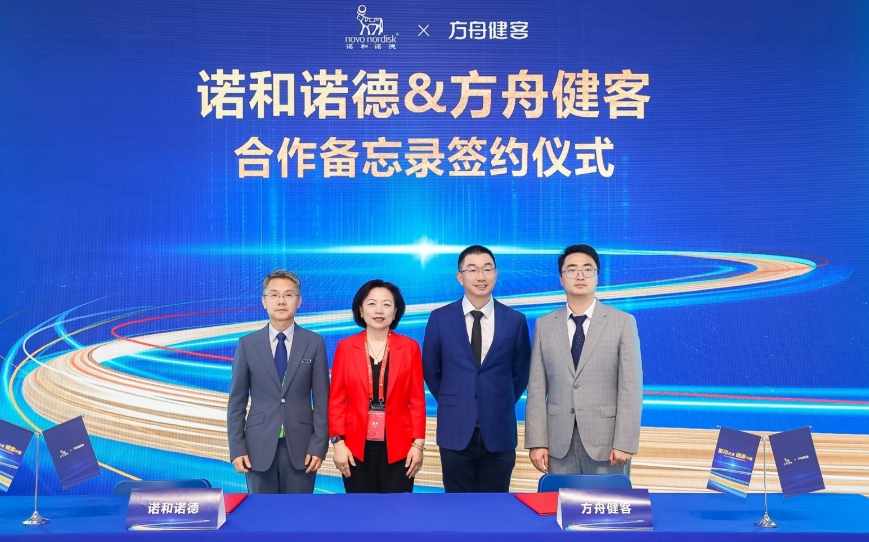
Mr Luongo:
In line with the World Health Organisation’s (WHO)’s objective to tackle the emerging threat of antimicrobial resistance (AMR), Menarini is striving to reduce morbidity and mortality rates by supporting both the responsible use of antibiotics through global antimicrobial stewardship programmes and providing access to novel antibiotics targeting multidrug-resistant infections. However, new treatments alone are insufficient to combat AMR.
The urgent need to accelerate research and development on AMR prevention and care is hampered by the weak pipeline of antibiotic medicines and dearth of anti-infectives that can effectively treat multidrug-resistant infections. Although are currently in development, the unpredictable, costly and long R&D timelines for antibiotic development impact the availability of new antibiotics. This issue is further exacerbated by the pharmaceutical industry’s shift away from antibiotic discovery in favour of medicines targeted towards chronic disease management (e.g., depression and cancer) as they guarantee higher returns on investment.
In Asia, inadequate infrastructure and funding, multiple regulatory and administrative barriers, the high cost of AMR diagnostic test consumables and limited pool of qualified clinicians and scientists deter the development of AMR solutions for patients in the region. All of these interrelated circumstances hinder the roll-out of effective AMR surveillance platforms and the inclusion of anti-infective drugs in international or national antimicrobial guidelines, which often mean patients in Asia are not prescribed with appropriate antibiotics.
We foresee an urgent need to foster strategic partnerships between industry, healthcare professionals and regulators to address the future of AMR as one ecosystem, with authorities needing to look much more at both the existing data and the actual needs of patients so they can choose the right medicines for the right patients at the right time.
Mr Zhao:
AMR is a complex problem that requires a united multi-sectoral approach. For instance, action is needed on targeted fronts to strengthen our approach to human medicine, animal medicine, the pharmaceutical industry and educating the general public on AMR. China is already doing many of these things and has attained some invaluable achievements. In August 2016, China issued a National Action Plan to Contain Antimicrobial Resistance (2016-2020) with 14 ministries to ensure a clear multi-sectoral approach to tackling this growing issue[2]. In October 2022, China issued the National Action Plan to Contain Antimicrobial Resistance (2022-2025), aiming to further curb AMR and better protect people's health.
We are also aware of the fact that AMR still remains a public health concern in China. Surveillance results showed that the detection rate of carbapenem-resistant Klebsiella pneumoniae (CRKP) in China increased from 0.7% in 2007 to 19.9% in 2018[3]. Efforts to eliminate AMR in the country continue to be impeded by limited reliable clinical therapeutic regimens and listing processes implemented in some of the hospitals, causing delays to patients’ access to new products in some cases.
At SciClone, we recognise the importance of leveraging collective industry expertise to exercise all possible options for addressing AMR. The WHO’s Strategic Priorities on Antimicrobial Resistance, published earlier this year, recommended that stakeholders must concentrate their resources into multisectoral coordination to develop strong sector-specific responses, otherwise AMR will render common diseases untreatable and undermine modern life-saving procedures[4].
As “partners-in-arms” in the fight against AMR, Menarini and SciClone hope that our strategic partnership and collective commitment in the anti-infectives space will catalyze the need to prioritize investment in antimicrobials and facilitate policy reforms to uplift accessibility of antibiotics for patients in Asia.
Mr Luongo:
By 2050, the APAC region is forecast to account for 47% of the AMR-related deaths worldwide, with the incidence of AMR much higher than the rest of the world[5]. A study of 50 countries concluded that India and China have the highest resistance to top-priority antibiotics-pathogen pairs, including common strains like Staphylococcus aureus, E-coli and Carbapenem-resistant Enterobacterales (CRE)[6].
Menarini takes our commitment to fighting AMR in the Asia Pacific region very seriously and intentionally focus our efforts on where patients are most in need. To strengthen an Asia-specific anti-infective pipeline and solution, we continuously seek to bolster the lean antibiotic pipeline in the region by leveraging our key strengths (in-licensing, self-marketing and out-licensing) to provide faster and easier access to antibiotics.
Given the pressing statistics indicating the prevalence of AMR, there is an intrinsic need to partner with innovators across our value chain to offer solutions to AMR in areas of high unmet need. This is why we recently entered into a strategic collaboration with SciClone Pharmaceuticals to bring to market a novel meropenem/vaborbactam treatment originally discovered and developed by Melinta Therapeutics. This initiative will serve to expand options to address unmet therapeutic needs in AMR infections, specifically CRE in Asia.
Mr Zhao:
There are strong unmet medical needs for CRE treatment in China but limited therapeutic choices in clinical application. This is evident from the report by the China Antimicrobial Surveillance Network (CHINET), which showed the rising incidence of CRKP infections in China over the last 10 years[7].
To expand options to address the public health threat of AMR infections in China, particularly CRE, we will utilize our in-depth knowledge of the regulatory and access procedures to move forward quickly with China-based clinical trials and ultimately facilitate the approval of meropenem/vaborbactam.
We are hopeful that this will help provide greater access to anti-infective treatments for patients with severe multidrug-resistant infections in China and other parts of the world and play an important part in global efforts in the fight against AMR.
Mr Luongo:
As a founding investor of the USD$1 billion AMR Action Fund, Menarini is working alongside more than 20 other strategic and innovative biopharmaceutical companies to facilitate the necessary policy reforms to make antibiotics more accessible and allow collaboration with governments to develop a sustainable pipeline of new antibiotics by 2030[8].
Menarini also contributes to further scientific understanding and education at international meetings on AMR, such as the World AMR Congress and we continue to support the International Federation of Pharmaceutical Manufacturers and Associations’ (IFPMA) AMR Data Generation and Endorsement Project. This important initiative is looking at alternatives to the broken volume-driven drug reimbursement model that is holding back research and development in this area.
Mr Luongo:
Beyond its devastating impact on public health, the threat of AMR also poses a profound economic burden with research showing that in Thailand alone, it incurs US$0.5 billion-$2.3 billion additional treatment costs annually due to drug-resistant nosocomial infections. Extrapolating the Thailand experience to the wider APAC region suggests AMR could cost the region in the range of US$50 billion-$150 billion in annual healthcare expenditure. Left unaddressed, this equates to 0.8%-1% of regional GDP[9].
Therefore, it is critical to invest human and financial resources to addressing AMR as a public health threat before the health and economic costs escalate to unmanageable levels.
Beyond strengthening the antibiotic pipeline, we also need to build patient and public trust to untangle the decades of overuse and misuse of antibiotics. This requires a clear focus on patients who are suffering from AMR infections. Often, such patients are not ‘owned’ by a particular infectious disease doctor and as a result, health systems are not fully aware of the causal factors behind sepsis deaths – i.e., specific drug resistant infections.
More companies need to pay attention to the unmet needs of patients and this is why Menarini places importance on selecting partners who share this view and are willing to form strong patient-centric partnerships built on strong compliance and governance principles that can help us move the needle on AMR. Our strong presence, established reputation, and breadth of experience in the region together with our long-term vision and commitment to ensuring patient access to high-quality, high-value medicines can ultimately be leveraged for the collective benefit of our patients and partners.
In the coming year, we will focus on expanding access to the treatment (meropenem/vaborbactam) with Melinta Therapeutics and SciClone Pharmaceuticals while continuing to look at other novel approaches and pipelines needed for effective antibacterial therapies to sustainably combat AMR.
Mr Zhao:
SciClone is keen to work with global partners to introduce internationally developed and advanced treatment options to China and to provide patients around the world with our own high-quality innovative drugs to cure severe AMR infections.
Companies should not do it alone – partnerships are vital, especially with those that already have the commercial infrastructure in place so we avoid reinventing the wheel. More companies need to be allied with a common goal to shine a spotlight on the unmet needs of patients as this will make a difference. As innovative biopharmaceutical companies, we should give full play to our professional expertise to meet unmet clinical needs. We are grateful that in our path to excellence in healthcare, we have Menarini Asia-Pacific and Melinta Therapeutics as partners in tackling AMR.
We need to see more partnerships like the collaboration between Menarini, Melinta, and SciClone, as I am sure this will be a successful model for the future.
[1] Lack of new antibiotics threatens global efforts to contain drug-resistant infections, News, World Health Organisation. 16 January 2020. Link: https://www.who.int/news/item/17-01-2020-lack-of-new-antibiotics-threatens-global-efforts-to-contain-drug-resistant-infections
[2] China: National action plan to contain antimicrobial resistance 2016-2020 (Chinese & English). World Health Organization (WHO). 14 July 2014. Link: https://www.who.int/publications/m/item/china-national-action-plan-to-contain-antimicrobial-resistance-(2016-2020)
[3] Analysis of the Drug Resistance of Carbapenem-Resistant Klebsiella pneumoniae in the China Antimicrobial Resistance Surveillance Trial Program, 2007–2018. Research Gate. Feb 2020. Link: https://www.researchgate.net/publication/339198400_Analysis_of_the_Drug_Resistance_of_Carbapenem-Resistant_Klebsiella_pneumoniae_in_the_China_Antimicrobial_Resistance_Surveillance_Trial_Program_2007-2018
[4] WHO Strategic Priorities on Antimicrobial Resistance: Preserving antimicrobials for today and tomorrow. World Health Organization (WHO). 18 May 2022. Link: https://www.who.int/publications/i/item/9789240041387
[5] Asia-Pacific in the Eye of AMR Storm: Nurturing Innovation To Fight Antimicrobial Resistance. L.E.K. Consulting, Strategy Consulting Firm. 28 May 2021. Link: https://www.lek.com/insights/sr/asia-pacific-eye-amr-storm
[6] Asia-Pacific in the Eye of AMR Storm: Nurturing Innovation To Fight Antimicrobial Resistance. L.E.K. Consulting, Strategy Consulting Firm. 28 May 2021. Link: https://www.lek.com/insights/sr/asia-pacific-eye-amr-storm
[7] Virulence evolution, molecular mechanisms of resistance and prevalence of ST11 carbapenem-resistant Klebsiella pneumoniae in China: A review over the last 10 years. Science Direct.com, Science, health and medical journals, full text articles and books. Dec 2020. Link: https://www.sciencedirect.com/science/article/pii/S2213716520302356
[8] The AMR Action Fund announces its first non-industry investments, raising an additional US$140 million toward addressing antimicrobial resistance (AMR). Antimicrobial Resistance Research & Development – AMR Action Fund. 18 Feb 2021. Link: https://www.amractionfund.com/blog-2022/the-amr-action-fund-announces-its-first-non-industry-investments-raising-an-additional-us140-million-toward-addressing-antimicrobial-resistance-amr#:~:text=The%20AMR%20Action%20Fund%20is%20an%20initiative%20from%20over%2020,antibiotics%20to%20patients%20by%202030.
[9] Drug-Resistant Infections: A Threat to Our Economic Future. World Bank, World Bank Group. 1 Mar 2017. Link: https://www.worldbank.org/en/topic/health/publication/drug-resistant-infections-a-threat-to-our-economic-future




